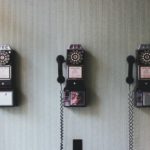I made the argument in a past blog that the open education movement would stall (specifically within higher ed) because it runs counter to capitalism and the lucrative business of university degree programs. With the readings that followed that blog – (Friesen (2009): Open Educational Resources: New Possibilities for Change and Sustainability and Conole and Brown (2018): Reflecting on the Impact of the Open Education Movement), I only felt emboldened to rant on, buoyed by some research that supported my suspicion. However, with every passing week of learning I have been both justified in my steadfast yet decidedly uninformed initial stance, but somehow also encouraged to soften that stance and assume a new, more positive position.
I am continually amazed, as a learn more, at the broadness of the term open. It appears that the specifics of this term are still being debated, with Conole and Brown (2018) noting that it currently encompasses an absurdly wide spectrum from open universities, to open sources, data and initiatives, all the way to any practice associated with newer web technology (deemed Web 2.0). As a person who relishes absolutes, I find the vagueness around terminology disconcerting; but I am willing to concede that with this new and constantly evolving technologically-connected idea it takes time to find the boundaries of the terminology.
Hazy terminology aside, the humanitarian goal of the open education movement cannot be derided. Creating a well-educated civilization, through free and freely accessible educational resources is a lofty and worthy goal – ideas that Friesen (2009) notes were defined and adopted at the 2002 UNESCO Forum on the Impact of Open Courseware for Higher Education in Developing Countries.
But is the goal of having freely accessible educational content enough? I ask this as I am not sure of the answer myself.
According to the paper National Values Profile of Canadian Libraries, by Brundin and Schrader (2012), created for the Canadian Library Association, approximately 40% of Canadians are “active” library cardholders, at a cost of about $3.5 billion. While I understand that well-stocked library systems are not ubiquitous in developing countries (and what a price tag!), neither are robust cellular networks – and at the risk of oversimplifying – what is open courseware if not a digital library with content-specific videos and resources? I wonder how many citizens currently use the freely available resources in a library to improve their position in society?
Which brings me to my argument – that the open education goal must be loftier: to provide freely, to anyone, the resources required to improve their current life situation in a measurable (i.e. economic) way. The problem I see currently is that having open resources as most currently stand won’t ensure anything will come of this potential for the people who need it most.
When Friesen (2009) laments the lack of sustainability of open-content repositories – stating the average lifetime is less than three year – he connects it to a lack of real and sustained government or parent institution funding. This isn’t surprising as online open repositories were likely not seeing enough traffic to make them economically justifiable as a publicly funded resource, and certainly not as a revenue stream for a corporation. And this is in line with the findings noted in Forty years of pushing the boundaries of education by Som Naidu (2019). In the article, Naidu speaks to the general trends of open education seen for many universities, stating that they “are attracted to the potential of digitalization and distance education but only to give the impression of modernized and progressive thinking on their part.” (2019, p.427) And further, “not at the expense of their core business models and modus operandi.” (2019, p.427)
More frustratingly, one of the shining stars of the open education movement – MIT’s Open Courseware, continues to be lauded simply because MIT is too big to fail – or as Friesen states, “MIT is able to leverage an already existing global reputation.” (2009, p.10) Translation: students from all over the world want to go to MIT, so providing free resources online for informal learning will have no effect on enrollment and revenue and will only serve as promotion. It could also be posited that MIT’s superficial commitment to open helps to draw donations and funding from philanthropic sources – any successful and reputable higher education setting can likely follow suit. Ho et al. (as cited in Rohs & Ganz, 2015, p.8) stated that “despite the optimistic and aspirational declarations of many MOOC providers, these courses are not, as of yet, making education “borderless, gender-blind, race-blind, class-blind, and bank account-blind.”
Which brings me back to libraries – our current open education repositories for informal learning, and my lofty goal. Citizens likely don’t go to the library to improve their employment situation – to do that they must enroll in a formal learning setting. On its website, MIT informs interested parties: “Knowledge is your reward. We don’t offer credit or certificates for using OCW. Instead, use OCW to guide your own life-long learning, or use OCW to teach others.” (“FAQ: Using OCW Materials”, n.d.) This is a real problem with most OER and the open education movement: the education is free, but it comes with fine print *diploma and resume not included.
Creating open resources for real educational potential through the emerging idea of microcredentials or verified “badges” as evidence of completed coursework, may be part of a positive movement in the economic potential of open education for all. deLaski (2019), in an article titled As the Microcredential Market Booms, Don’t Forget the Learner, states that “(a)t least 20 percent of American colleges now offer badges—non-credit and for-credit credentials,” (2019, Introduction section, para. 3) and that “(o)ne in five employers report that they have hired someone with a verified certificate from a platform such as Coursera or EdX.” (2019, Introduction section, para. 4)
This would be fantastic progress (and maybe it still is), if deLaski didn’t note after that most systems are currently geared towards the “already employed, skilled career climbers“, and to a lesser extent the “degree-earning college student.” (2019, Creating the “Why” for Learners, para. 2) In their research, Rohs and Ganz (2015) have also found that most current MOOC users already have a higher education degree. Why are we not finding better ways to really serve those who would most benefit from open education?
The roadblocks limiting the full potential of open educational resources for citizens who would most benefit are numerous and complex. Some have been well outlined by Rohs and Ganz (2015), as the authors discuss factors of the Knowledge Gap – prior knowledge, communication skills, and social situation, as well as the Digital Divide – weak tech skills, poor tech infrastructure, self-directed learning skills.
Rohs, M., & Ganz, M. (2015) also propose some solutions to move forward and overcome these gaps: the need for better content (beginning at a lower level), better organization and structure, and “stronger political and monetary support.” (2015, p.15)
I will go one step further and suggest that to fully embrace the open education movement requires governments and agencies to fully fund OER and ensure that assessment and credit is possible. This requires free, fully publicly funded, open-ed post-secondary university.
Yes, degrees/diplomas/microcredentials etc., may not have the lustre of equal credentials from more established higher education institutions; but that isn’t different than the system that currently exists (who hasn’t been more impressed by a degree from MIT over Brandon University). However, what this would do is at least remove the financial barrier for all. That’s one less roadblock.
References
Brundin M. R., and Schrader A. M. (2012) National Values Profile of Canadian Libraries. Retrieved January 9, 2020 from
http://cla.ca/wp-content/uploads/CLA-Statistical-and-Values-Profile-of-Canadian-Libraries.pdf
Conole, G., and Brown, M. (2018). Reflecting on the Impact of the Open Education Movement. Journal of Learning for Development – JL4D, 5(3).
https://jl4d.org/index.php/ejl4d/article/view/314
deLaski, K. (2019). As the Microcredential Market Booms, Don’t Forget the Learner. Retrieved January 9, 2020, from
https://www.edsurge.com/news/2019-10-31-as-the-microcredential-market-booms-don-t-forget-the-learner
FAQ: Using OCW Materials | MIT OpenCourseWare | Free Online Course Materials. (n.d.). Retrieved January 9, 2020, from
https://ocw.mit.edu/help/faq-using-ocw-materials/
Friesen, N. (2009). Open Educational Resources: New Possibilities for Change and Sustainability. The International Review of Research in Open and Distributed
Learning, 10(5). https://doi.org/10.19173/irrodl.v10i5.664
Hamilton, E. R., Rosenberg, J. M., and Akcaoglu, M. (2016). The Substitution Augmentation Modification Redefinition (SAMR) Model: a Critical Review and
Suggestions for its Use. TechTrends, 60(5), 433–441. https://doi.org/10.1007/s11528-016-0091-y
MIT OpenCourseWare | Free Online Course Materials. (n.d.). Retrieved January 9, 2020, from https://ocw.mit.edu/index.htm
Rohs, M., and Ganz, M. (2015). MOOCs and the claim of education for all: A disillusion by empirical data. The International Review of Research in Open and
Distributed Learning, 16(6). https://doi.org/10.19173/irrodl.v16i6.2033
Naidu, S. (2019) Forty years of pushing the boundaries of education. Distance Education, 40(4), 425-429. https://doi.org/10.1080/01587919.2019.1693952
Zawacki-Richter, O., and Naidu, S. (2016). Mapping research trends from 35 years of publications in Distance Education. Distance Education, 37(3), 245–
269. https://doi.org/10.1080/01587919.2016.1185079
PHOTO: “person wearing red graduation dress” @honeyyanibel – Free from Unsplash







Rene Schwarz
December 5, 2019 — 9:52 am
You hit the nail on the head. Again and again we come to realize there is a silent but growing frustration in higher education in the west that wants to adopt fiscal models like those found in Europe where the state pays for those who demonstrate their ambition while in grade schools. Free university education in North America might put that frustration to rest along with “lofty” ideals behind OER and open learning.